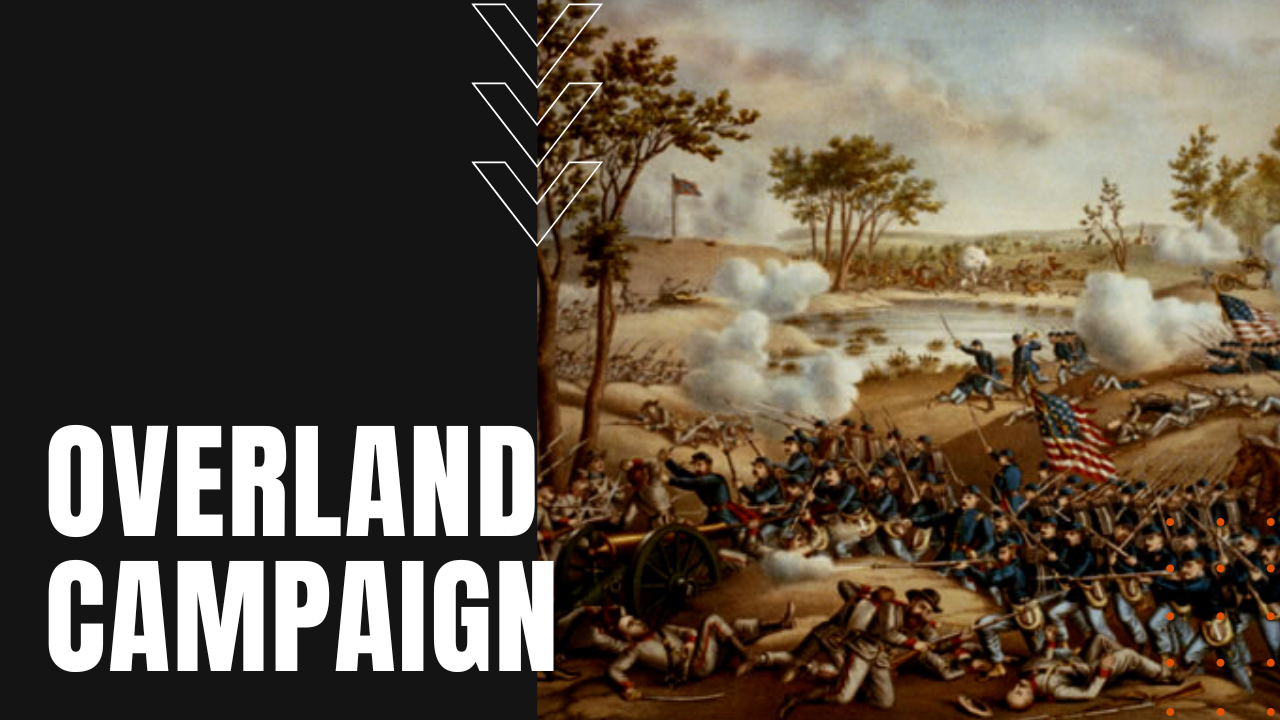Overland Campaign: Ulysses S. Grant vs. Robert E. Lee

Despite calls for Ulysses S. Grant’s removal as Union commander following his poor performance at the 1862 Battle of Shiloh, as the Civil War approached its fourth bloody year, President Abraham Lincoln promoted Grant to lieutenant general—a rank not given to a wartime commander since George Washington.
In response, Grant engaged a massive three-pronged offensive now known as the Overland Campaign, intended to crush Robert E. Lee’s Confederate army, while capturing the rebel capital at Richmond before sweeping farther south toward Atlanta.
Battle of the Wilderness
Outnumbering Confederate forces nearly two to one, on May 5th, 1864, the opposing armies came together during the two-day Battle of the Wilderness fought near Locust Grove Virginia. Amidst a densely-forested landscape, soldiers on both sides fired blindly through thick vegetation and choking dense smoke, igniting fires in the tinder-dry woods that roasted hundred of trapped and wounded soldiers.
Ending in a tactical draw, the two-day battle witnessed 18,000 casualties for the Union Army and 11,000 for the Confederates, reducing Grant to tears as he sat alone in his tent. Grant quickly regained his determination telling a reporter that “If you see the president, tell him from me that whatever happens there will be no turning back.”
Battle of Spotsylvania Courthouse
On the morning of May 8th, mere hours after the Battle of the Wilderness, advancing Union forces met the rebels yet again at the crossroads town of Spotsylvania Court House, where the Confederates had dug an inverted U-shaped line of trenches, which led to a bloody four-day standoff. The Battle of Spotsylvania Court House came to a head on May the 12th, when Grant commanded General Winfield Scott Hancock to pierce the rebel’s battle line with a 20,000-man offensive, setting off 20 hours of hand-to-hand combat during a driving rainstorm.
Protracted battles continued for the next two weeks, costing the Union Army another 18,000 casualties before Grant skirted Confederate forces in his push toward Richmond. Sporadic fighting continued at North Anna and Totopotomoy Creek, before the Union Army suffered a lopsided defeat at the Battle of Cold Harbor, some ten miles northeast of the Confederate capital, at a cost of an additional 7,000 Union casualties.
Who Won the Overland Campaign?
Grant’s six-week Overland Campaign ended on June 12th, when Union forces crossed the James River at Petersburg, laying siege to the Confederate city for the next nine months to come. During Grant’s offensive into the South, both sides witnessed numbing casualties—some 55,000 dead, missing or wounded for the Union Army, while the Confederacy witnessed 33,000 combined casualties.
Despite staggering losses, Grant received a telegram from his commander-in-chief, stating simply that “I begin to see it. You will succeed. God bless you all,” Lincoln wrote, making Grant’s Overland Campaign, a costly yet decisive turning point in the American Civil War.
